| Name | Koneshwaram Kovil |
| Other Names/Old names |
|
| Location | Trincomalee |
| Address | |
| Co-ordinations | 8.5824436,81.2453556 |
| Trip Type | Religious , Historical , Culturel |
| Elevation | 20 m |
| Best days/Dates to visit | – |
| Entrance Fee | – |
| How to get there | Trincomalee |
| Open times | |
| Public Transportation | – |
| Privet Transportation | |
| Height / Length / Dimensions |
Explore the historical significance of Koneswaram Temple, its legends, rituals, and architectural beauty. A sacred site offering insights into Hindu traditions.
The East is an area that currently does not receive even a hundred percent of the tourist attraction it should receive, but is filled with tremendous natural, geo-global, historical, and cultural significance. Among these, Trincomalee stands out as a true tourist paradise.
History of Koneshwaram Kovil
The Greek writer Strabo, citing the notes of Eratosthenes and Onesicritus, describes a shrine built on Swami Rock. He writes that the temple is located near a cliff that drops 400 feet directly into the sea. Contemporary historians S. Pathmanathan and Paul E. Peirce believe that the Koneshwaram temple has a written history dating back to 300 BC. It is believed that the Vayu Purana, an ancient Sanskrit hymn written in 300 AD, mentions the Thirukoneshwara temple.
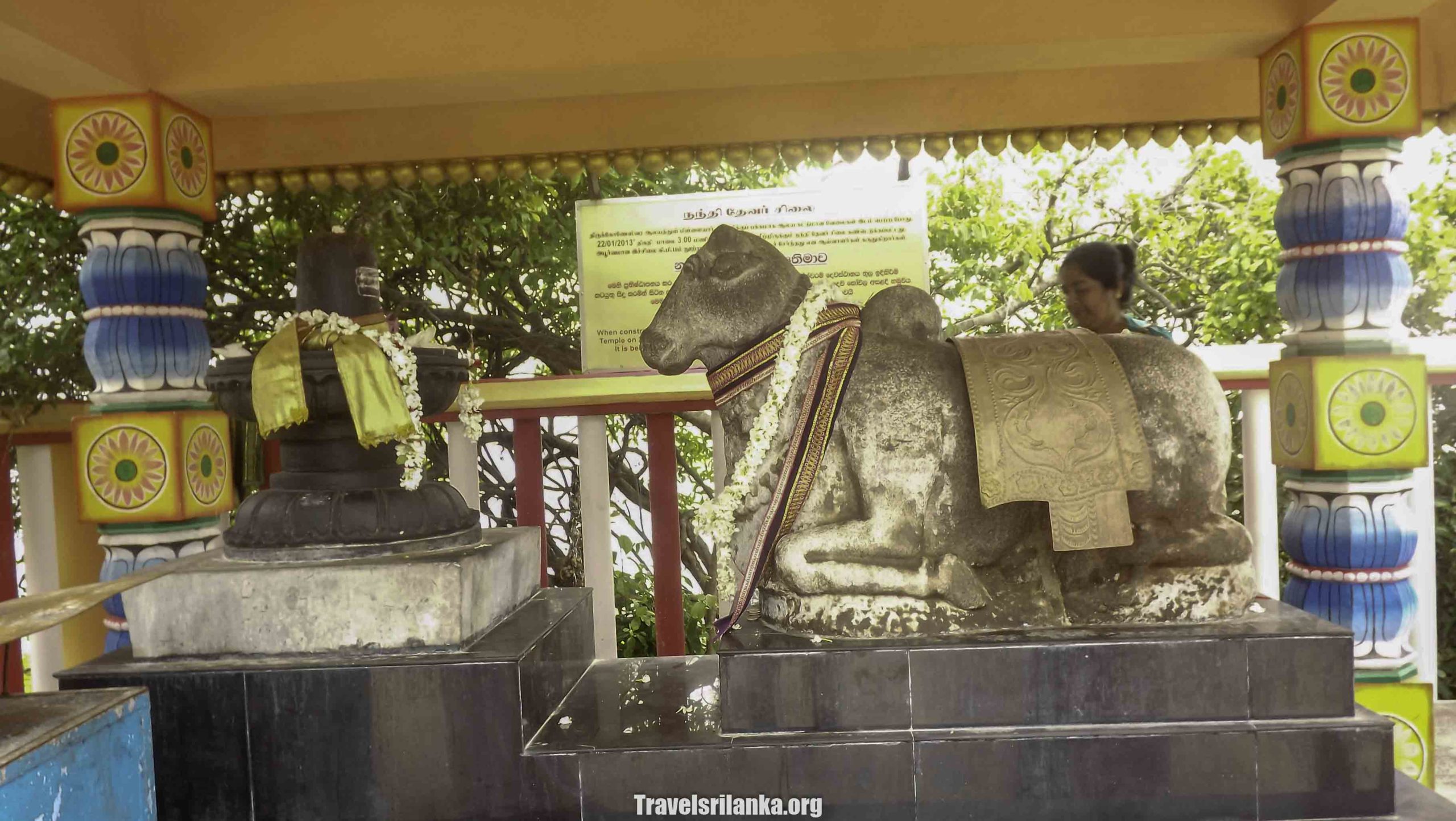
Hindu religious history refers to five shrines dedicated to Lord Shiva in our country (Pancha Eshwaram) with names ending in “Eshwaram”. Those temples are “Koneshwaram” in Trincomalee built by King Ravana, “Thiruketheeswaram” built in Mannar by “Maya”, the mother-in-law of King Ravana, “Munneswaram” temple in Halawatha and “Naguleswaram” in Jaffna and “Thondeeswaram” in Matara. Mathota aka Matara “Thondeeswaram” temple is not there today (there is now the “Devinuwara Upulvan Temple” you all know). Pancha Eshwaram shrines
Most powerful temple built around the world dedicated to Lord Shiva
Known as Thirukoneshwaram or Koneshwaram, the Hindus believe that this temple is the most powerful temple built around the world dedicated to Lord Shiva. They strongly believe that this is a holy ground where Lord Shiva and Goddess Parvati resided, and where Lord Ganadev and Murugan (God of Kataragama) played during their childhood.
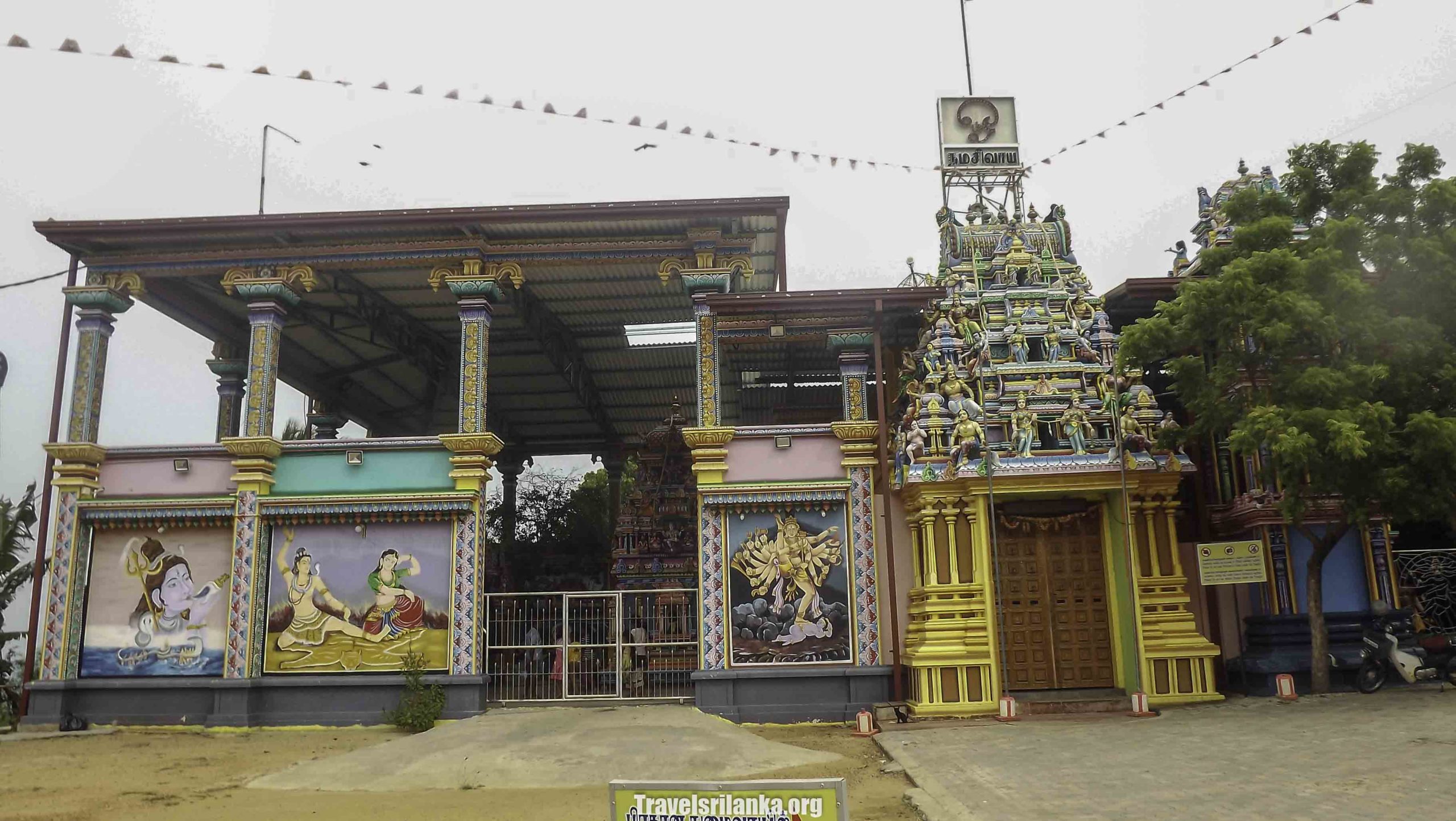
the Location of the Koneshwaram Kovil
According to a legend about the hill (Swami Kanda) where the Koneswaram temple is located, this hill is part of the golden mountain where Gods used to reside, and it witnessed a conflict between them in the past. It is mentioned in Janavahara that King Ravana observed a strict fast for Lord Shiva at the site of “Gokannashrama” (where the present-day Koneshwaram temple is located) where sages and meditators lived. King Ravana worshiped Lord Shiva and his wife Parvati, treating them as his own mother and father.
King Ravana Meeting Lord Shiva
King Ravana asked Lord Shiva, whom he regarded as his father, for a boon to “become immortal”. “You are a person who should not be killed by anyone,” Lord Shiva gave a vow to King Ravana at this Koneshwaram temple. When the great King Ravana was practicing yoga in this land, he also started to compose the powerful “Shiva Tandava Sutrotra” which worships Lord Shiva, inspired by a cosmic sound wave. The divine power of Shiva-Parvati and the spiritual significance of King Ravana are ingrained in this land, making it a truly auspicious place.
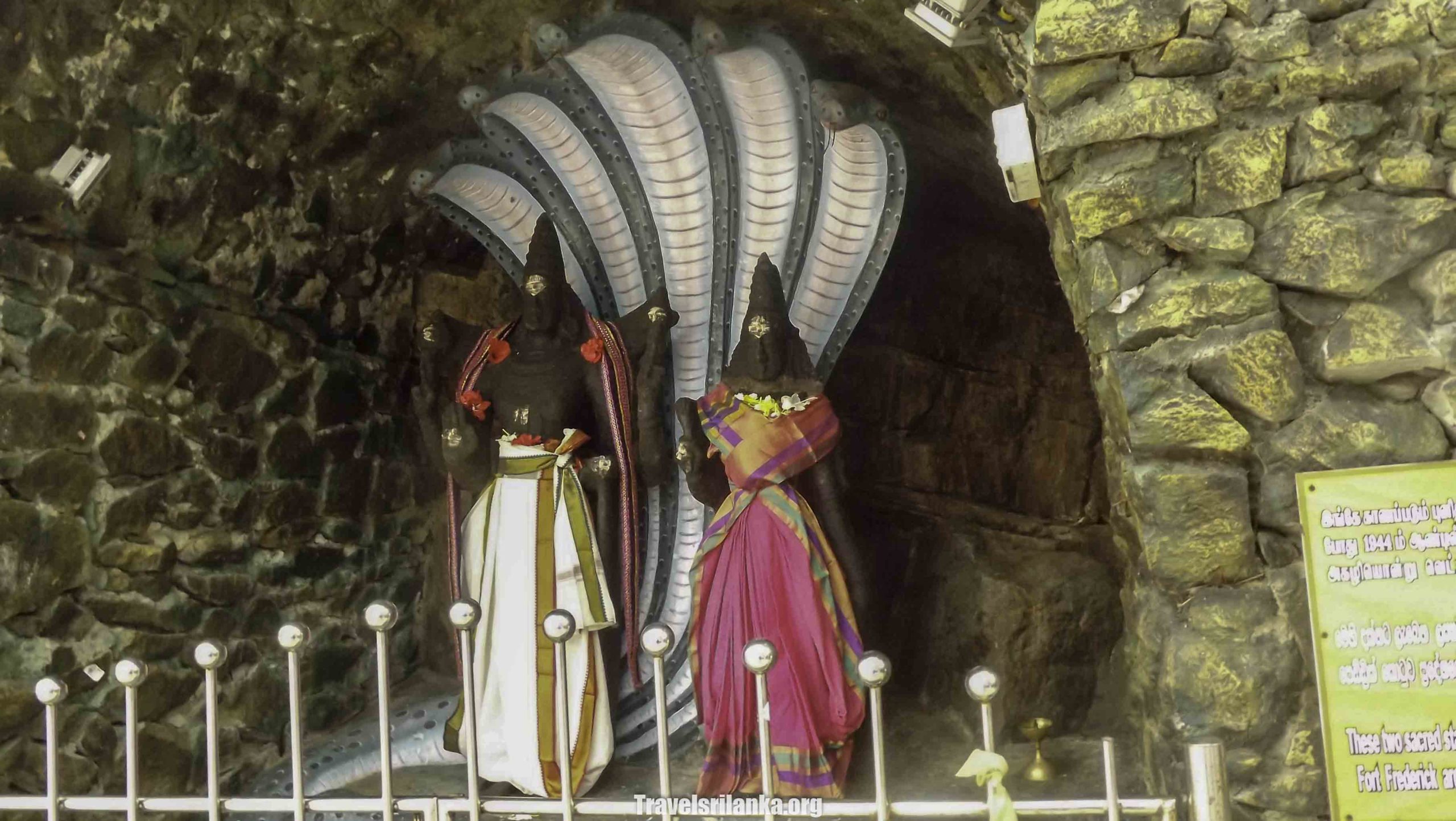
Only light vehicles can enter the fort, so other vehicles have to park somewhere near the three-way junction. However, don’t forget that there are many herds of deer on foot without entering the enclosure of a vehicle. There are some old cannons on the left side of the road towards Holland Bay. Although you can go to the temple by car, I would say that walking is better to enjoy the beauty of the environment and the journey. You can buy the required offerings from the rows of shops that are visible near the temple. (There are numerous small shops with a wide variety of items like idols, sweets, necklaces, toys, and souvenirs). You are visiting this temple to worship Lord Shiva.
Touring the Temple
Before you enter the temple, you will notice a row of statues on your right that remind you of Lord Shiva sitting with Goddess Parvati, Ganapati, and Murugan in the temple you are about to enter. The Thirukoneshwaram temple, a sacred shrine for Hindu devotees, should be entered while wearing a traditional samwara dress and following the rituals. It is a Hindu tradition to wash hands and feet before entering the temple. There is a designated area for this at the foot of the steps leading to the temple. Wash your feet at the foot of the stairs Enter the temple after passing the enormous statue of Lord Shiva, which is visible from quite a distance.
There is a specific sculpture above the main entrance of the Koneswaram temple depicting Lord Shiva, Goddess Parvati, and King Ravana. The sculpture narrates the past story of Lord Shiva, Goddess Parvati, and King Ravana.
Past background story
He went to the rock of Kailashaku where Lord Shiva used to reside and asked him to bring a Shiva lingam for the mother of King Ravana, who was in the royal palace (today’s Kelaniya), so that she could worship Lord Shiva easily. There, King Ravana encountered a Brahmin. Unbeknownst to him, Lord Shiva was in disguise as a Brahmin. The Brahmin informed Ravana about the presence of a Shiva linga on the Koneswaram hill.
Intrigued by this, the Ravana kings journeyed to the location of the present-day Koneswaram temple. There, King Ravana met Lord Shiva. King Ravana requested Lord Shiva to grant him a Shiva Linga. When there was no immediate response from Lord Shiva, King Ravana, known for his strength, decided to cut the hill where the Shiva linga was situated and transport it to the royal palace. The powerful King Ravana used his sword to cut the stone housing the Shiva linga, an event now known as the “Ravan cut.”
Ravana cut
Lord Shiva was angry at what Ravana had done. Then Lord Shiva suddenly lifted his leg and gently placed it on Ravana’s head. Goddess Parvati also raised her leg and gently placed it on Ravana’s head. Because of this work of the Shiva-Parvati couple, King Ravana did not get to take the Shiva Linga from there. The king, who suffered the divine wrath of the Shiva-Parvati couple, begged for forgiveness, cut off one of his own heads, prepared a veena and sang “Samaveda”. There again Shiva-Parvati blessed Ravana. After that, the Ravana kings built a huge temple there by burying the Shiva Linga.
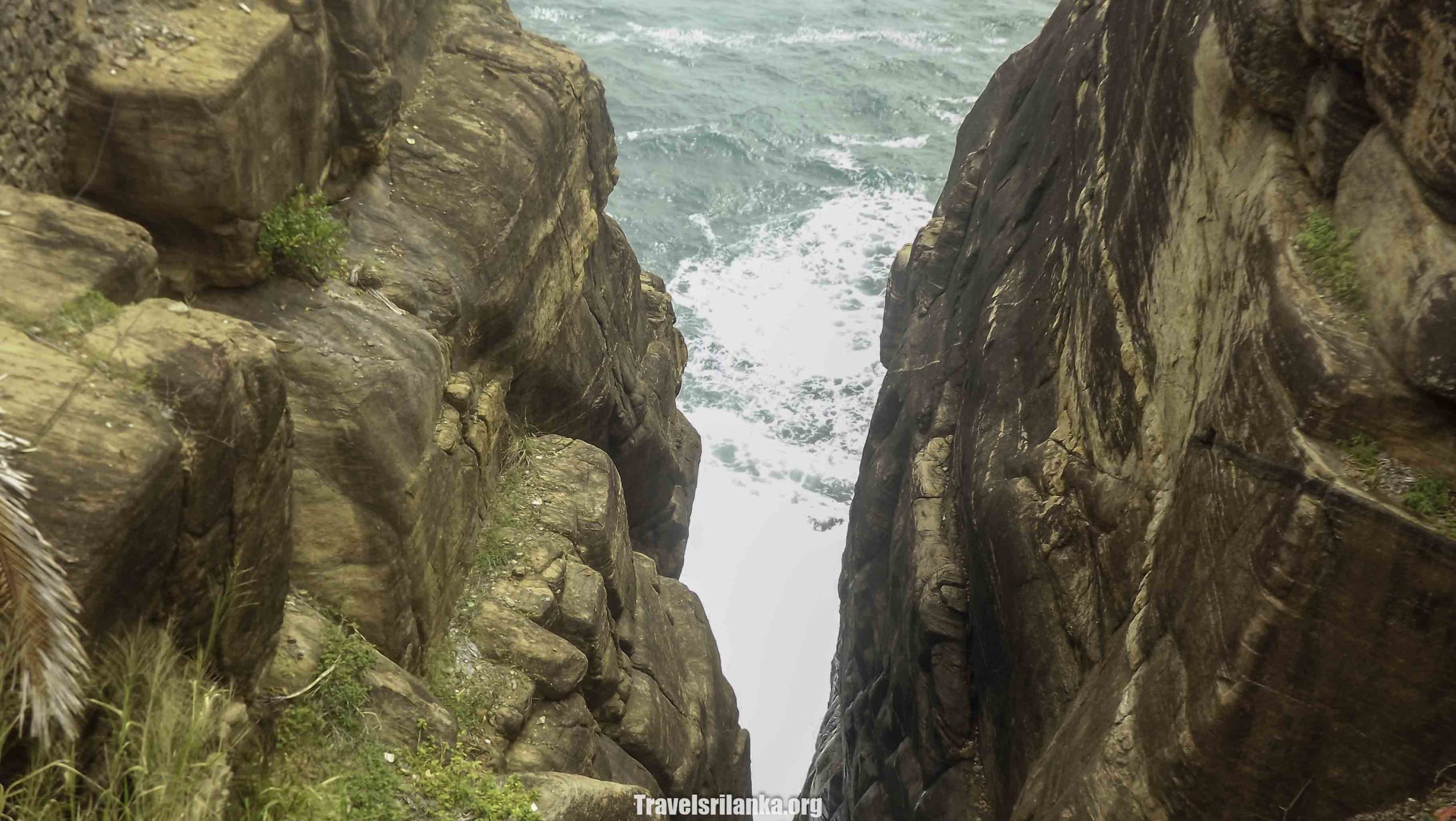
Now you know the story of Lord Shiva and Goddess Parvati with their legs on the head of King Ravana. You will have a question, “If Ravana kings built this temple, shouldn’t it be that old?”, it is reasonable that you will not feel that way when you see the new construction of the temple.
Portuguese attack
On April 14, 1622, when the Hindu New Year was celebrated, the Portuguese army, including Constantino de Shah, a heartless Portuguese soldier, was killed by King Mahasen, who was located near the Koneswaram temple. The Gokanna temple built in 275 was also destroyed.
Priests hid to protect sacred Shiva linga, idols from Portuguese attack
One of the carved pillars of the old Thirukoneswaram temple, which was made up of a thousand pillars that were destroyed by the Portuguese, can still be seen on the top of the hill in the temple grounds.
The only remaining pillar of the Thousand Pillar Shiva Temple
The temple that we see now is a new temple that was renovated in 1963 and added new elements after that. Antiquity is seen not in the buildings, but in the Shiva linga and the idols. No matter what invasion, no one has been able to destroy the spiritual energy embedded in this holy land.
Pooda Pooja activities are held three times a day at 6:30 AM, 11:30 PM, and 4:30 PM. As usual, puja activities are not performed from noon to three in the afternoon. But there is no hindrance to worship the pilgrims coming and going.
It is necessary to place offerings before handing over the offering pot to the Kurukkals. Pay the amount of your choice to the office and ask for a receipt with all the details of your barahara, as there is no custom in the Koneswaram temple of putting money leaves on top of the pooja vatti. Put that receipt on the top of the pooja watti and hand over the pooja watti to a Kurukkal. After that, meditate with Lord Shiva in your mind and ask him to fulfill the matter you came for. Kurukkal will take care of the rest. Talk to the Brahmin caste Kurukkals, who do not eat meat and fish, are 100% vegetarian, and come from a generation of sages who are dedicated to God’s work.
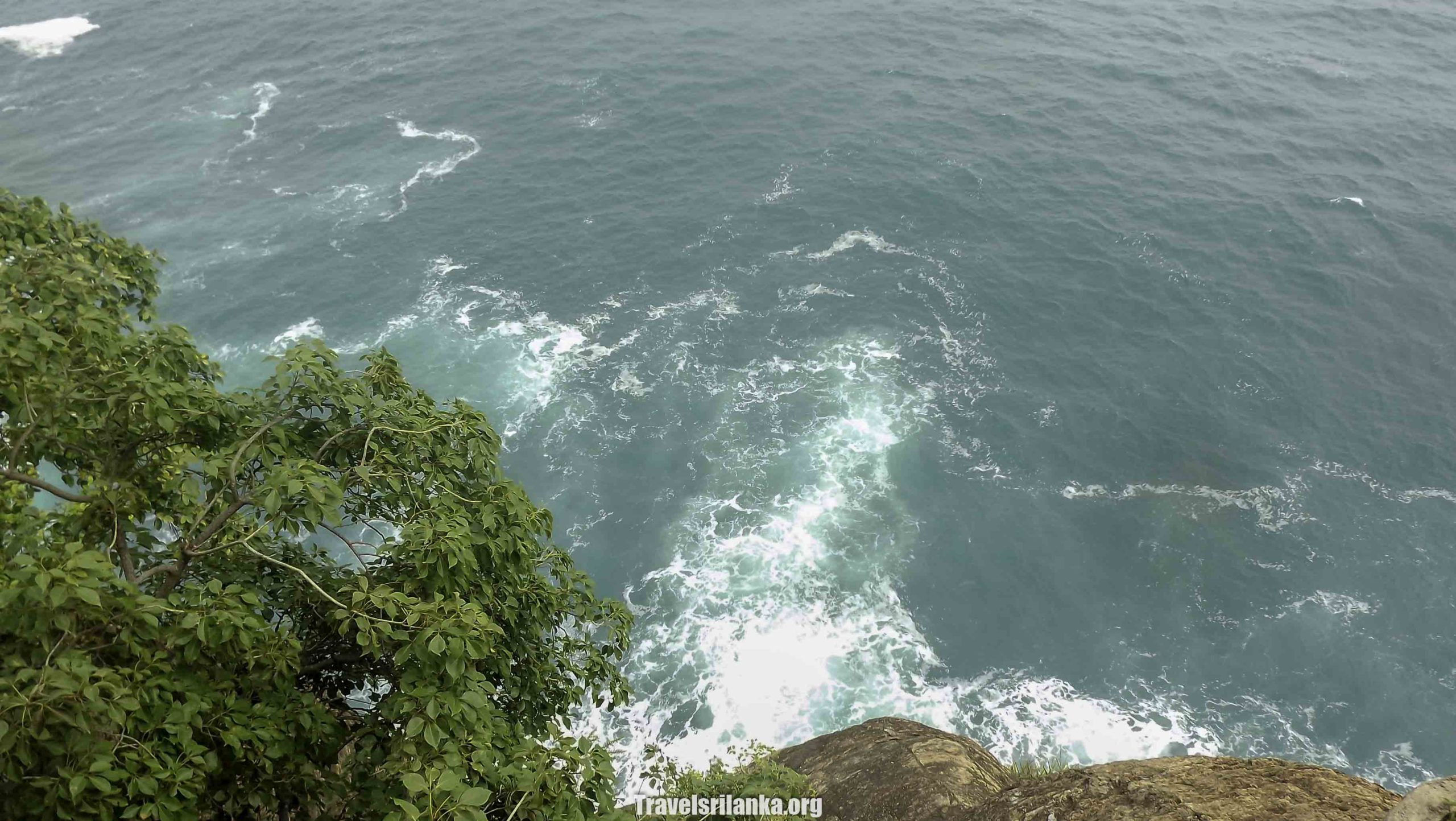
At the end of the pooja, a Kurukkalthuma will hand over the pooja pots that you have brought back to you. For the offerings handed over with a coconut, you should be careful because the Kurukkals will burn camphor on the coconut and give it to you. Take that coconut and hit the coconut tree outside the temple and pray for your wish to be fulfilled.
Don’t forget to see the sculptures on the walls inside the temple with the story of Ravana – Koneswaram, paintings and sculptures with various forms of Shiva and Goddess Parvati.
Huge Shiva-Parvati paintings are also painted on the walls around the temple.
A newly made Shiva lingam, two ancient Vishnu and Lakshmi murtis (discovered in the sea near Fort Frederick by the British in 1944) have been added to the quiet grounds of the Koneswaram temple.
Ancient Vishnu and Lakshmi sculptures
This section, near the entrance steps to the temple, near the Ravana cut, is made to create a space for devotees who want to meditate.
It is most popularly said that bharaharas performed on childless devotees at Thirukoneshwaram shrines bring results. You can see tens of thousands of vows of mothers who have given birth to children by making a cradle and making a vow in this temple.. Here you can see more about the prevention of planetary pollution, healthy wealth, hopes for protection, protection of protection and development of businesses etc.



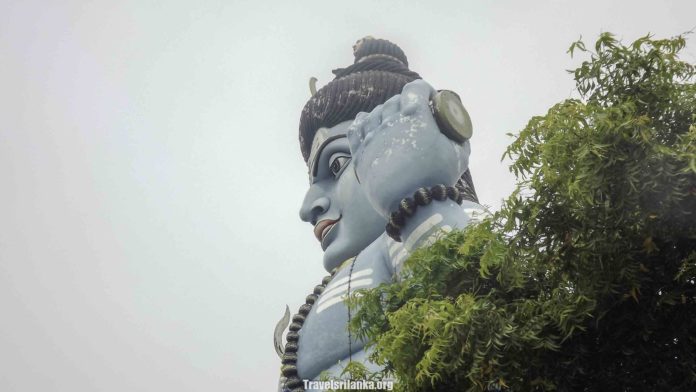
[…] Source link […]